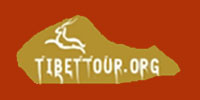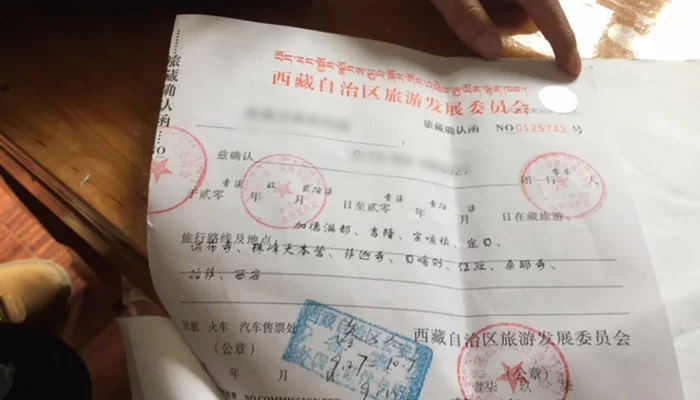Nepal and China shares a border of 1415 kilometers along the majestic Himalayas, with six major crossing points - all located in the Tibetan Autonomous Region. Among them, there are three international ports: Gyirong Port, the Purang Port, and Zhangmu Port, while the others serve as trade-only border crossings.
If you are planning an overland tour between Tibet and Nepal, this guide will help you learn details about each crossing. Read on to find out where these borders are, how they are currently used, how to cross them, what documents you’ll need, etc. Get ready for a smooth experience for your Tibet and Nepal tour!
Gyirong Port: The Most Popular Border for Nepal Tibet Overland Tours
Gyirong Port is the most popular crossing point for international tourists to travel between Tibet and Nepal. It is located in Gyirong Town in southwestern Tibet, and connects to Rasuwagadhi in Nepal via the Friendship Bridge. The port is about 600 kilometers from Lhasa and 130 kilometers from Kathmandu.
At about 1818 meters, Gyirong Port is known for its relatively lower altitude and mild climate. Before ascending to Tibet’s higher regions, you can enjoy the lush scenery of Gyirong Valley here while acclimatizing to the altitude. The nearby Gyirong town also offers convenient facilities, including comfortable hotels, restaurants and other essential service.
 Our guests have arrived at Gyirong Port.
Our guests have arrived at Gyirong Port.Gyirong Port offers great convenience for those traveling overland from Lhasa to Kathmandu or vice versa. The route follows a well-paved road through Tibetan plateau, and usually takes about 7 or 8 days. Along the way, you can explore many Tibetan highlights, such as Mount Everest Base Camp, Shigatse, Yamdrok Lake, etc.
Before crossing the port, you will need certain documents depending on your travel direction. This includes Tibet Travel Permit and Chinese Visa for both directions, and other documents like Alien’s Travel Permit if you visit places like Everest Base Camp in Tibet. Don’t worry - we will help you handle all the necessary documents as long as you join our Tibet Nepal tour.
Notice:
Due to a flash flood that occurred on July 7, 2025, the Friendship Bridge collapsed, and the Gyirong Port is temporarily closed now. In the meantime, the nearby Zhangmu Port has been temporarily reopened for tourists to enter Tibet from Nepal.
We will keep the information updated regarding the status of the Gyirong Port. If you have any questions about your itinerary, feel free to contact us for inquiries and personalized support.
Explore exotic Tibet on this overland journey across the Roof of the World.
Purang Port: Best for Mount Kailash and Lake Manasarovar Pilgrimage Tours
Purang Port is the ideal border crossing for pilgrims and tourists visiting Mount Kailash and Lake Manasarovar. Connecting Yari Port in Nepal, the port is located in Purang County, Ngari Prefecture in the northwest of Tibet. It is 117 kilometers from Mount Kailash and 200 kilometers from Kathmandu.
When crossing the Purang Port and traveling to Mount Kailash, you need to pay attention to the altitude sickness. Although the port itself sits at 3700 meters above sea level, the whole gari region is the highest part of Tibet, with an average altitude of 4500 meters.
As for the travel documents, you need to prepare Tibet Travel Permit and Chinese Visa for Tibet entry, as well as the Alien’s Travel Permit and the Military Permit for visiting Mount Kailash region. The process of these documents can take a long time, and it is recommended to start your application at least one month in advance.
Besides, for Indian passport holders planning to take Kailash Manasarovar Yatra, your Tibet Travel Permit can only be arranged by the Foreign Affairs Office of Tibet Autonomous Region or the Pilgrim Center.
One thing to be noted is that the Purang Port has not yet fully recovered since it was closed due to the epidemic in 2020. We will continue to provide updates for any new information.
 Purang Port is the ideal border crossing for pilgrims visiting Mount Kailash.
Purang Port is the ideal border crossing for pilgrims visiting Mount Kailash.Zhangmu Port: A Historic Gateway Now Temporarily Open to Tourists
Located in Zhangmu Town, Nyalam County, Shigatse City of Tibet, Zhangmu Port was once the busiest land border crossing between Tibet and Nepal. It is the end point of the famous G318 National Highway, situated only 120 kilometers from Kathmandu and 736 kilometers from Lhasa.
Linked with Kodari in Nepal, Zhangmu Port sits at an altitude of 2300 meters, on the southern foothill of the Himalayas. It was severely damaged by the 2015 Nepal earthquake, and then reopened in 2023, mainly used by local trade and Chinese tourists.
Currently, Zhangmu Port is temporarily open for international tourists, owing to the closure of the Gyirong Port. However, the availability may vary depending on the status of Gyirong port and local road conditions. Hopefully, the port is is gradually recovering its former prosperity and will play a more important role in Tibet and Nepal overland tours.
 Zhangmu Port is the most historic border crossing between Tibet and Nepal.
Zhangmu Port is the most historic border crossing between Tibet and Nepal.Explore exotic Tibet on this overland journey across the Roof of the World.
Other Trade-Only Borders: Lektse, Riwu and Chentang
In addition to the above-mentioned international ports, there are also three trade-only borders between Tibet and Nepal. They are now not open for international tourists, and are mainly used for border trade.
#1 Lektse Port
Located in the west of Shigatse, Tibet, Lektse Port is the highest land border between Tibet and Nepal, with an altitude of 4772 meters. It is the fourth official land port to open in Tibet after Zhangmu, Gyirong and Purang. Now, the port is quite active, and the newly-built border trade market here is equipped with complete facilities.
#2 Riwu Port
Located in Shigatse, Riwu Port is one of the earliest borders opened in Tibet. Connecting to Olangchung Gola Port in Nepal, it is located only 7.6 kilometers from Dingye County of Shigatse city. The port is now mainly for local and small-scale trade.
#3 Chengtang Port
Chentang Port is located in Chentang Town, Dingye County, Shigatse City, Tibet. Situated southwest across the river from Nepal, the port is home to over 2500 Sherpa people. Despite its lonely location in the mountain valley, the port is continuously improved in facilities.
 Chentang Port is one of the trade-only borders between Tibet and Nepal.
Chentang Port is one of the trade-only borders between Tibet and Nepal.Insider Tips for Border Crossing between Nepal and Tibet, China
For a trouble-free and seamless border crossing at Nepal and Tibet, take a look at the following insider advice from our local travel guides.
1. Get travel documents beforehand
You need to get necessary travel documents before crossing the Tibet and Nepal border. You are required to obtain the Tibet Travel Permit and Chinese Visa if you are entering Tibet from Nepal. For those leaving Tibet to Nepal, the Nepal Visa can be acquired upon arrival at the border post.
2. Choose the best time to travel
For travel overland between Tibet and Nepal, the best months are from April to June and from September to November. Weather at these times of the year is pleasant, and the roads are safer. The rainy months of July and August should be avoided since the rainfall can result in landslides near the borders.
3. Pay attention to the altitude sickness
When entering Tibet via Nepal, you will encounter a significant altitude shift from roughly 1400 meters at the Kathmandu Valley to more than 4000 meters at the Tibetan Plateau. You’d better spend a night in the lower Gyirong Town in order to acclimatize at the height more effectively. Ascend slowly, especially when you plan to visit Mount Kailash or Mount Everest Base Camp after crossing the border.
4. Check the status of the borders in advance
The opening status of borders between Tibet and Nepal may change due to the nature force or local policies. It is recommended to contact us for the latest information and plan your itinerary accordingly.
Explore exotic Tibet on this overland journey across the Roof of the World.
Conclusion
There are totally six border crossings between Tibet and Nepal, and among them, the Gryrong, Puralng and Zhangmu serve as the international ports. No matter which route you choose for your Tibet and Nepal tour, remember to prepare the required documents and check the current border status in advance.
As the local Tibetan travel agency with years of experiences, we will do our best to ensure your Tibet and Nepal tour is worry-free, safe and smooth. For any questions and travel ideas, feel free to contact us or book your tour with us now!


























 Our guests have arrived at Gyirong Port.
Our guests have arrived at Gyirong Port.
 Purang Port is the ideal border crossing for pilgrims visiting Mount Kailash.
Purang Port is the ideal border crossing for pilgrims visiting Mount Kailash. Zhangmu Port is the most historic border crossing between Tibet and Nepal.
Zhangmu Port is the most historic border crossing between Tibet and Nepal. Chentang Port is one of the trade-only borders between Tibet and Nepal.
Chentang Port is one of the trade-only borders between Tibet and Nepal.








Ask a Quick Question